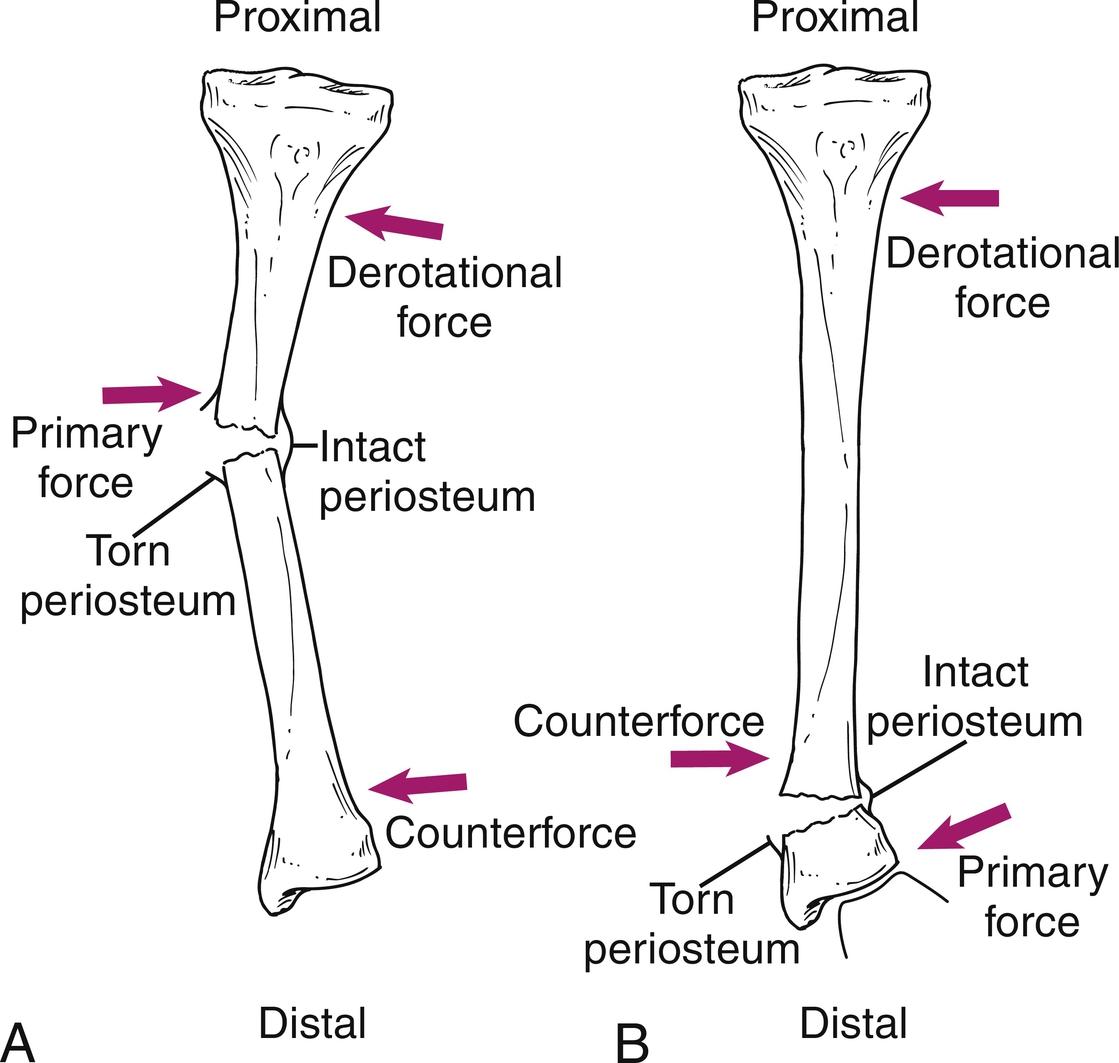Physical Address
304 North Cardinal St.
Dorchester Center, MA 02124
Diaphyseal fractures ( Fig. 8.1 A ):
The primary reductive force should be applied against the apex of the fracture.
Counterforce applied in the opposite direction both proximal and distal to the apex stabilizes the limb.

Metaphyseal/epiphyseal fractures ( Fig. 8.1 B):
The primary reductive force should be applied just distal to the fracture.
Counterforce should be applied in the opposite direction just proximal to the fracture and in the same direction as the primary force at the proximal end of the bone.
Indications for reduction by exaggerating the deformity:
The principle of this reduction method is to:
Technique:
Begin with manually applied traction and countertraction.
Place a thumb or two just proximal to the fracture on the side opposite to the apex as a fulcrum.
Apply a point of counterforce proximal to the fracture on the side of the apex.
Exaggerate the deformity by accentuating the apex so that the angulation of the fracture exceeds 90 degrees.
Using the thumb(s), push distalward, moving the fulcrum more distal.
Correct the deformity and reduce the fracture.
Become a Clinical Tree membership for Full access and enjoy Unlimited articles
If you are a member. Log in here